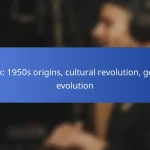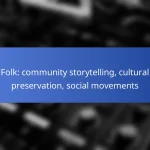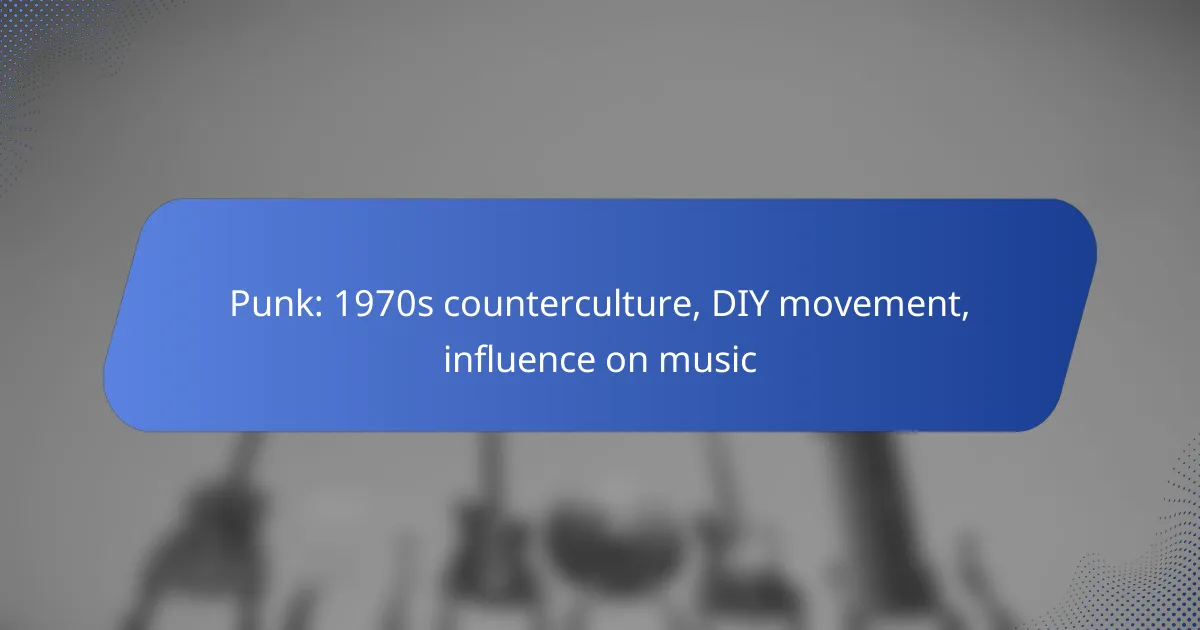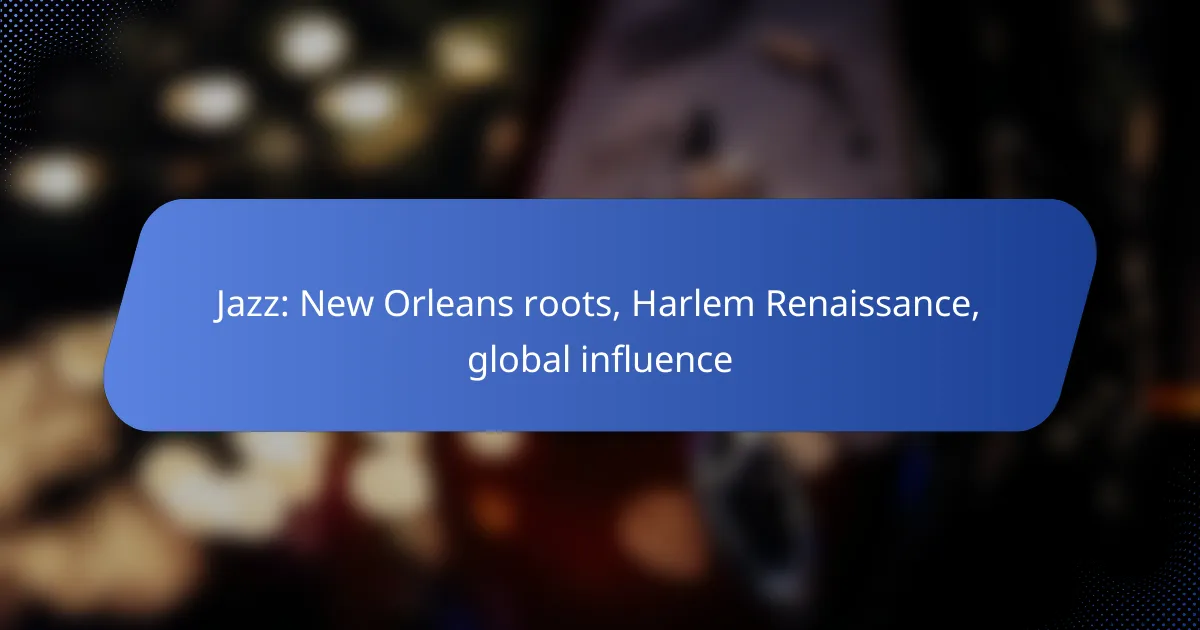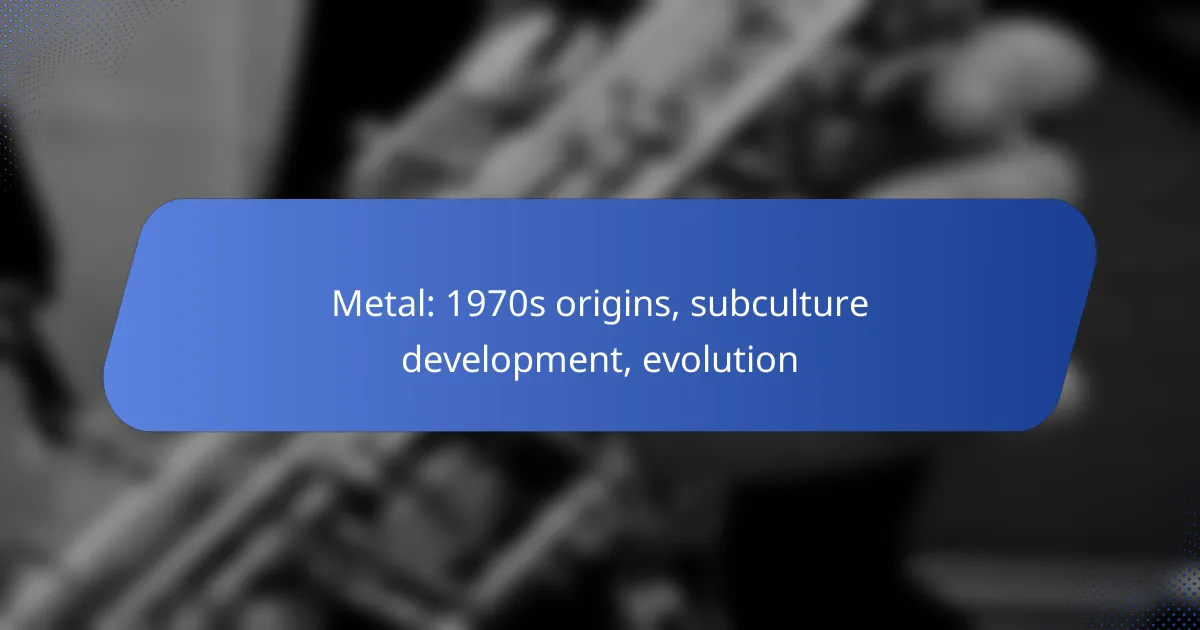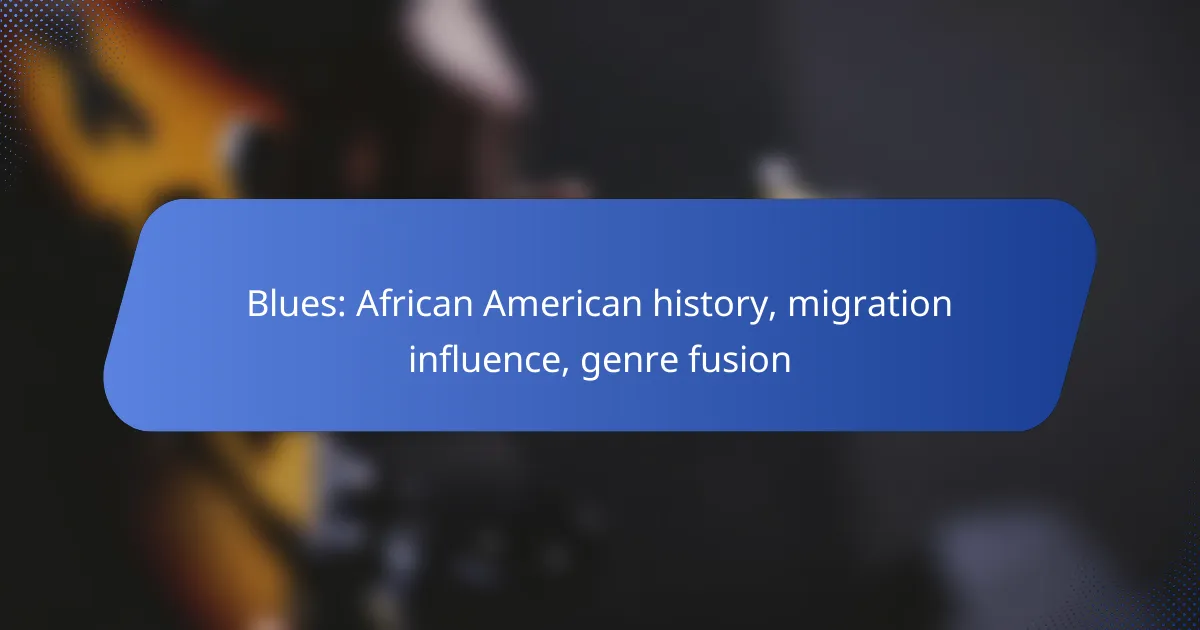The punk movement of the 1970s emerged as a powerful counterculture, marked by its rejection of mainstream values and a strong DIY ethos. This vibrant scene not only transformed music with its raw sound but also empowered artists to take control of their creative expressions, fostering a culture of authenticity and rebellion. Through its emphasis on individuality and anti-establishment sentiments, punk became a significant force in shaping both musical and social landscapes.
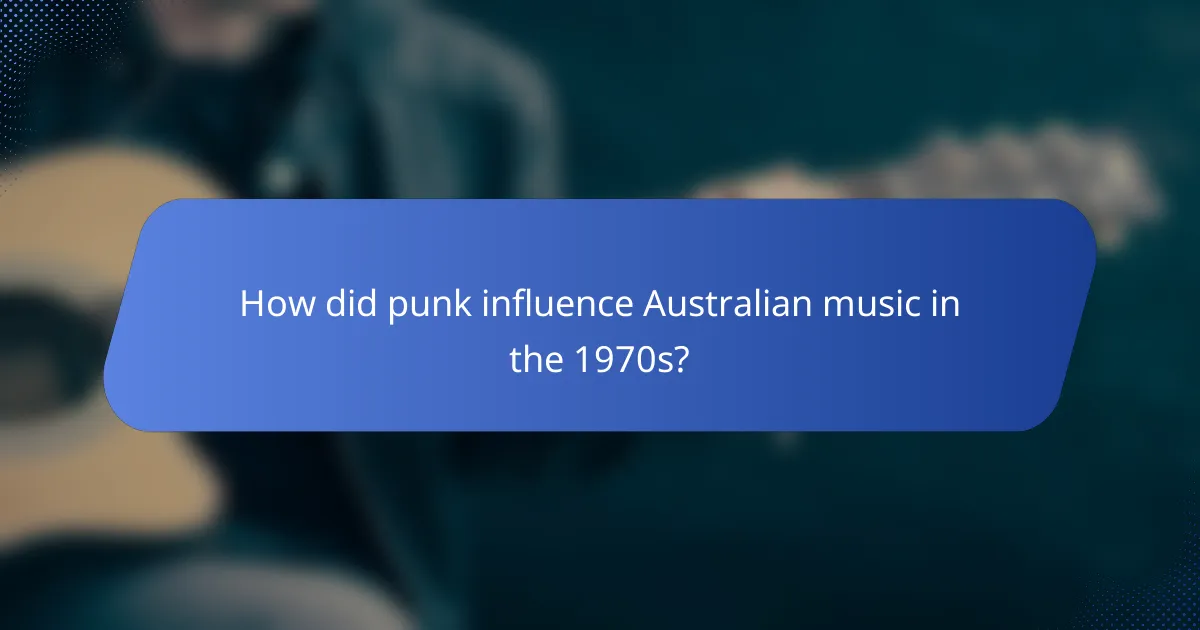
How did punk influence Australian music in the 1970s?
Punk significantly shaped Australian music in the 1970s by introducing a raw, energetic sound and a DIY ethos that resonated with local artists and audiences. This movement encouraged musicians to express their discontent with societal norms and explore new creative avenues, leading to a vibrant underground scene.
Emergence of Australian punk bands
The late 1970s saw the rise of several influential Australian punk bands, including The Saints, Radio Birdman, and The Birthday Party. These groups embraced the punk philosophy, often performing in small venues and fostering a sense of community among fans and musicians alike.
Many of these bands drew inspiration from international punk acts while infusing their music with local themes and issues. This unique blend helped to establish a distinct Australian punk identity that resonated with the youth of the time.
Impact on local music scenes
Punk’s arrival transformed local music scenes across Australia, leading to the formation of numerous independent record labels and venues dedicated to showcasing punk and alternative music. This grassroots movement allowed artists to bypass traditional music industry gatekeepers and connect directly with their audience.
The DIY approach encouraged musicians to experiment with their sound and style, resulting in a diverse array of subgenres and influences. This shift not only revitalized the Australian music landscape but also inspired future generations of musicians to pursue their artistic visions.
Connection to global punk movements
Australian punk was part of a larger global movement that included influential scenes in the UK and the US. Bands from Australia often communicated and collaborated with their international counterparts, sharing ideas and sounds that transcended geographical boundaries.
This connection to global punk movements helped Australian bands gain recognition beyond their local scenes, with some even touring internationally. The exchange of ideas and styles contributed to the evolution of punk music, making it a truly global phenomenon that resonated with youth culture worldwide.

What are the key characteristics of the 1970s punk DIY movement?
The 1970s punk DIY movement is characterized by a strong emphasis on self-production, a rejection of the mainstream music industry, and the creation of independent record labels. This movement empowered artists to take control of their music and message, fostering a culture of creativity and authenticity.
Emphasis on self-production
Self-production in the punk DIY movement allowed musicians to record and distribute their music without relying on traditional studios or producers. Bands often utilized home recording equipment and low-cost technology, enabling them to produce albums with minimal budgets. This approach not only reduced financial barriers but also encouraged experimentation and innovation in sound.
Many punk bands recorded their music in makeshift studios or even in their own homes, which contributed to the raw, unpolished sound that became a hallmark of the genre. This authenticity resonated with fans who appreciated the genuine expression of the artists.
Rejection of mainstream music industry
Punk musicians actively rejected the norms and practices of the mainstream music industry, which they viewed as commercialized and insincere. This rejection was evident in their music, fashion, and overall ethos, promoting a do-it-yourself attitude that prioritized artistic integrity over commercial success. Bands often critiqued the corporate influence on music, advocating for a more grassroots approach.
This stance fostered a sense of community among punk artists and fans, who sought to create an alternative culture that celebrated individuality and self-expression. By distancing themselves from mainstream trends, punk musicians carved out a unique identity that resonated with a disillusioned youth.
Creation of independent record labels
The establishment of independent record labels was a crucial aspect of the punk DIY movement, allowing artists to maintain control over their music and distribution. These labels often operated on tight budgets and focused on promoting underground talent, providing a platform for bands that might not have been signed by major labels. Examples include labels like SST Records and Dischord Records, which became influential in the punk scene.
Independent labels also encouraged collaboration among artists, leading to the release of compilation albums that showcased multiple bands. This not only helped to build a sense of community but also expanded the reach of punk music beyond local scenes, allowing it to gain traction in various regions.

What were the main themes of punk counterculture?
The punk counterculture of the 1970s was characterized by a rejection of mainstream values and norms, emphasizing authenticity, rebellion, and a DIY ethos. Its themes revolved around anti-establishment sentiments, social and political commentary, and a celebration of individuality and nonconformity.
Anti-establishment attitudes
Punk music and culture emerged as a direct response to perceived societal failures, including political corruption and economic inequality. Bands like the Sex Pistols and The Clash voiced their disdain for authority and traditional institutions, advocating for a radical change in societal structures.
This anti-establishment attitude was not just limited to music; it permeated fashion, art, and lifestyle choices, encouraging a break from conventional norms. Punk embraced a do-it-yourself mentality, promoting self-expression through unconventional means and rejecting commercialism.
Social and political commentary
Punk served as a platform for addressing pressing social issues, including war, poverty, and discrimination. Lyrics often reflected the struggles of the working class and marginalized groups, making punk a voice for those who felt unheard.
Through their music and performances, punk artists sparked conversations about political activism and social justice, urging listeners to question the status quo. This commentary was often raw and unfiltered, aiming to provoke thought and inspire action among fans.
Embracing individuality and nonconformity
The punk movement celebrated uniqueness and personal expression, encouraging individuals to reject societal expectations. Fashion choices, such as ripped clothing, vibrant hairstyles, and bold accessories, became symbols of rebellion against conformity.
Punk culture promoted the idea that everyone should embrace their true selves, regardless of societal pressures. This focus on individuality fostered a sense of community among punks, who found solidarity in their shared values of authenticity and resistance to mainstream culture.

How did punk fashion influence Australian youth?
Punk fashion significantly influenced Australian youth by promoting self-expression and rebellion against mainstream culture. The bold styles and DIY ethos encouraged young people to embrace individuality and challenge societal norms.
Adoption of distinctive styles
Australian youth adopted distinctive punk styles characterized by ripped clothing, leather jackets, and vibrant hair colors. This fashion was often DIY, with many young people customizing their outfits to reflect personal beliefs and attitudes. The use of safety pins, band t-shirts, and combat boots became iconic symbols of the punk movement.
Symbolism in punk attire
Punk attire served as a powerful symbol of resistance and nonconformity. Items like spiked accessories and graphic patches conveyed messages of rebellion against authority and societal expectations. The visual elements of punk fashion often included political slogans and imagery that resonated with the youth’s desire for change.
Impact on youth identity
The punk fashion movement played a crucial role in shaping youth identity in Australia during the 1970s. It fostered a sense of community among like-minded individuals who shared similar values of independence and creativity. Many young people found empowerment in adopting punk styles, which allowed them to express their unique identities and challenge the status quo.

What role did punk venues play in the 1970s?
Punk venues in the 1970s served as essential hubs for the burgeoning counterculture, providing spaces for like-minded individuals to gather, express themselves, and support emerging music. These venues fostered a sense of community and creativity that was crucial to the punk movement’s development and sustainability.
Gathering spaces for subcultures
Punk venues acted as gathering spaces where various subcultures converged, creating a vibrant atmosphere for artistic expression. These locations often welcomed individuals from diverse backgrounds, including artists, musicians, and activists, fostering a sense of belonging. The raw, unfiltered environment encouraged attendees to embrace their identities and challenge societal norms.
Support for local bands
Local punk venues provided crucial support for emerging bands, offering them a platform to perform and build a following. Many of these venues operated on a DIY basis, allowing bands to book shows with minimal financial barriers. This accessibility enabled numerous local acts to gain exposure and develop their sound, contributing to the overall punk scene’s growth.
Facilitation of community events
Punk venues often hosted community events, including art shows, film screenings, and benefit concerts, which strengthened local ties. These events not only showcased punk culture but also raised awareness for various social issues. By facilitating such gatherings, venues played a pivotal role in uniting the community around shared values and causes, reinforcing the punk ethos of activism and solidarity.
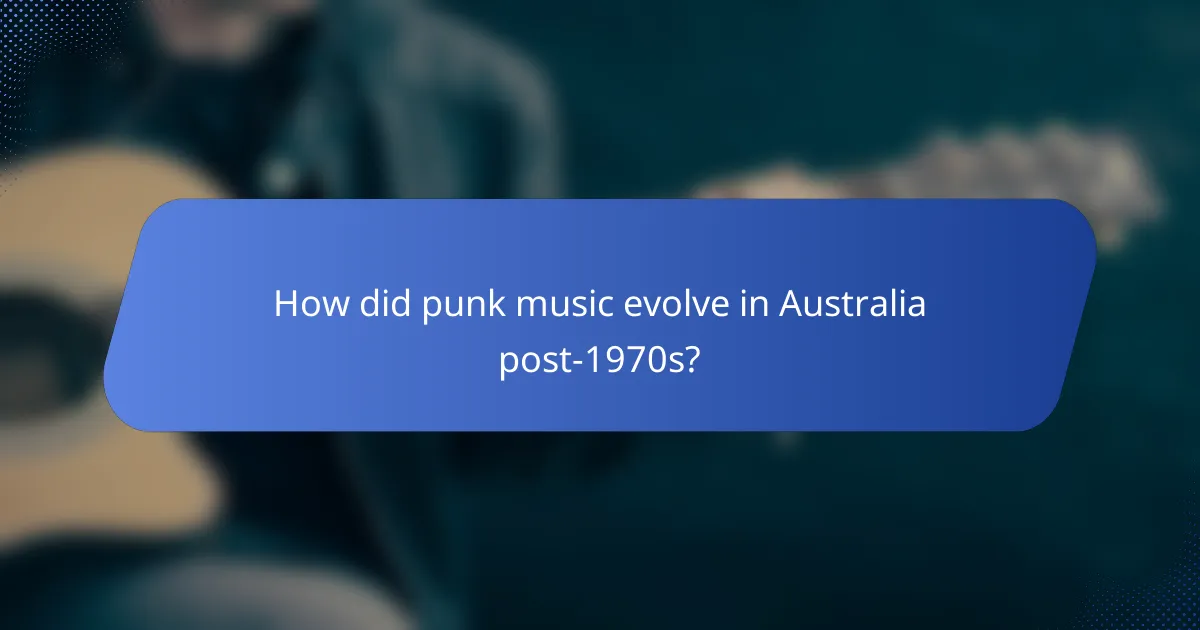
How did punk music evolve in Australia post-1970s?
Punk music in Australia evolved significantly after the 1970s, influenced by local culture and global trends. The movement embraced a DIY ethos, leading to the emergence of diverse punk subgenres and independent music scenes across the country.
The Rise of Australian Punk Bands
In the late 1970s and early 1980s, Australian punk bands like The Saints and Radio Birdman gained recognition for their raw sound and rebellious spirit. These bands often incorporated local themes and issues into their music, distinguishing themselves from their international counterparts.
As the scene grew, more bands emerged, including The Birthday Party and X, who pushed the boundaries of punk with experimental sounds. This period saw a flourishing of live music venues, fostering a vibrant community of musicians and fans.
DIY Culture and Independent Labels
The DIY culture was central to the evolution of punk in Australia, with many bands self-producing their music and organizing their own shows. Independent labels like Au Go Go Records played a crucial role in promoting local talent and distributing punk music without the constraints of major record companies.
This self-sufficiency allowed for greater creative freedom and a diverse range of sounds, from hardcore punk to post-punk. Bands were able to experiment with their music and image, leading to a rich tapestry of styles that reflected the Australian experience.
Influence on Future Music Genres
The impact of 1970s and 1980s punk in Australia can be seen in the development of various music genres in the following decades. Elements of punk have been integrated into alternative rock, grunge, and even pop music, influencing artists across the spectrum.
Moreover, the ethos of punk—rebellion against the mainstream and a focus on authenticity—continues to resonate with new generations of musicians. This legacy is evident in contemporary Australian music, where the spirit of punk inspires artists to challenge norms and express their individuality.



